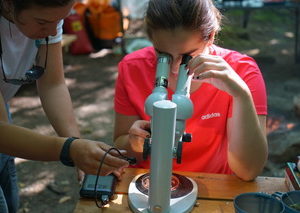Water Footprint of the Metal Mining Industry
This 2nd annual Canada Water Week, we are asked to discover our respective water footprints. At the outset it seems pretty straightforward, right? But as you have no doubt learned by perusing the CWW interactive infographic, the true water footprint of many of the foods we consume and products we buy is hidden – and very complex.
For example, did you know that 10% of all water withdrawn in Canada is used in the manufacturing sector? Manufacturing includes many complex steps to turn raw materials into finished products, among other things. And what if you consider how much water is used in the extraction, processing and refinement of each of the raw materials used? Well that’s probably a lot of additional water – especially when it comes to raw materials such as metals.
[separator headline=”h2″ title=”Metal Mining’s Water Footprint”]
Many metals are found in mineral-containing rocks called ores that occur in the earth’s crust, so they are not readily accessible. After they are mined, ores must therefore be processed using massive volumes of water and chemicals to effectively extract the desired metals. Given the tiny amounts of desired metals contained in most ores, more than 95% of all the material mined can become waste. When combined with the wastewater from the processing extraction stages, the leftover ore material – which was initially ground into fine particles – becomes slurry called “tailings”. As you can imagine hundreds of millions of tonnes of water-diluted tailings are generated from Canada’s mines each year (http://www.miningwatch.ca/two-million-tonnes-day-mine-waste-primer).
So many metal mines necessarily have a massive water footprint, even if some of the water is recovered from tailings over time. Given the importance of many metals to modern society and our global economy, perhaps this massive water footprint is justifiable? Maybe, but sadly the respective water footprints of some important metals like copper, gold and zinc are getting even bigger due to some provocative policy loopholes in Canada and other countries.
[separator headline=”h2″ title=”Meet Schedule 2″]
It’s a little-known, seemingly harmless list of natural water bodies that’s buried in a part of the federal Fisheries Act called the Metal Mining Effluent Regulations. The water bodies listed in Schedule 2 are actually government-authorized dumps for metal mine tailings. That’s right – toxic, contaminant-rich mine tailings are deliberately dumped into those water bodies. Schedule 2 was added to the 2002 Regulations at the 11th hour as a way to deal with several water bodies that had been used by historic metal mines to dispose of their tailings.
Unfortunately for Canada’s waterscapes and the people who love them, the Schedule 2 list was not just meant to “deal with” some radical accidents of history. That’s right – despite government reassurances that the list was a special circumstance, additional natural water bodies have been added over time. Since 2002, Schedule 2 has grown to 19 water bodies where metal mining companies are now permitted by law to dump their toxic waste.
So what was/is the true water footprint for metal coming from some of Canada’s metal mines? Regardless of the outcome, once a mine dumps concentrated, toxic mine waste into a water body, it has “used” the entire water body. Therefore, it’s easy to see how a metal mine exploiting the Schedule 2 loophole have far larger water footprints than those that do not.
[separator headline=”h2″ title=”Other Options”]
You are probably asking if there are other options for metal mine tailings disposal. Yes there are other options, but they tend to cost more and are not always as ‘convenient’ as existing water bodies. There is also a rational explanation for why tailings should be ‘stored’ or ‘impounded’ under a ‘water cover’: by preventing exposure of the reactive tailings to oxygen, the risk of dangerous acid-mine drainage (AMD) and contaminant leaching is greatly reduced. But water cover is not the only method, and it can be achieved using constructed storage areas instead of natural water bodies.
The metal mining industry suggests that Schedule 2 is intended only for exceptional circumstances where no other tailings disposal alternative is plausible. If that’s the case, then why does it appear that 1 in every 6 metal mines in Canada is using the Schedule 2 loophole? It makes me think of a passage from Dr. Seuss’s The Lorax: “ ‘Look Lorax,’ I said. ‘There’s no cause for alarm. I chopped just one tree. I am doing no harm. I’m being quite useful. This thing is a Thneed. A Thneed’s a Fine-Something-That-All-People-Need!’ ” The question is, where do the exceptions stop?
Nature Canada and other members of the Canadian Nature Network, alongside experts like MiningWatch Canada, are increasingly concerned that the metal mining industry is “normalizing” the use of Schedule 2; the more metal mines that exploit this loophole, the easier it becomes to do it. Additionally, the public consultation process around Schedule 2 proposals is neither transparent nor inclusive enough. The same can be said of the official habitat compensation plans metal mining companies must have approved by Fisheries and Oceans Canada to offset fish habitat loss due to Schedule 2.
[separator headline=”h2″ title=”So what can you do?”]
Simply tell other Canadians – including Canada’s decision-makers – about how much you love Canada’s iconic waterscapes and why you want to see them stay natural and wild. You can do this now by signing Canada’s first Love My Lake Declaration. Show your love for Canada’s waterscapes this Water Week! And tell your friends to join the chorus! After all, we are incredibly lucky as Canadians to be stewards of enormous volumes of water – water we share with other people, other nations, and countless other organisms.



